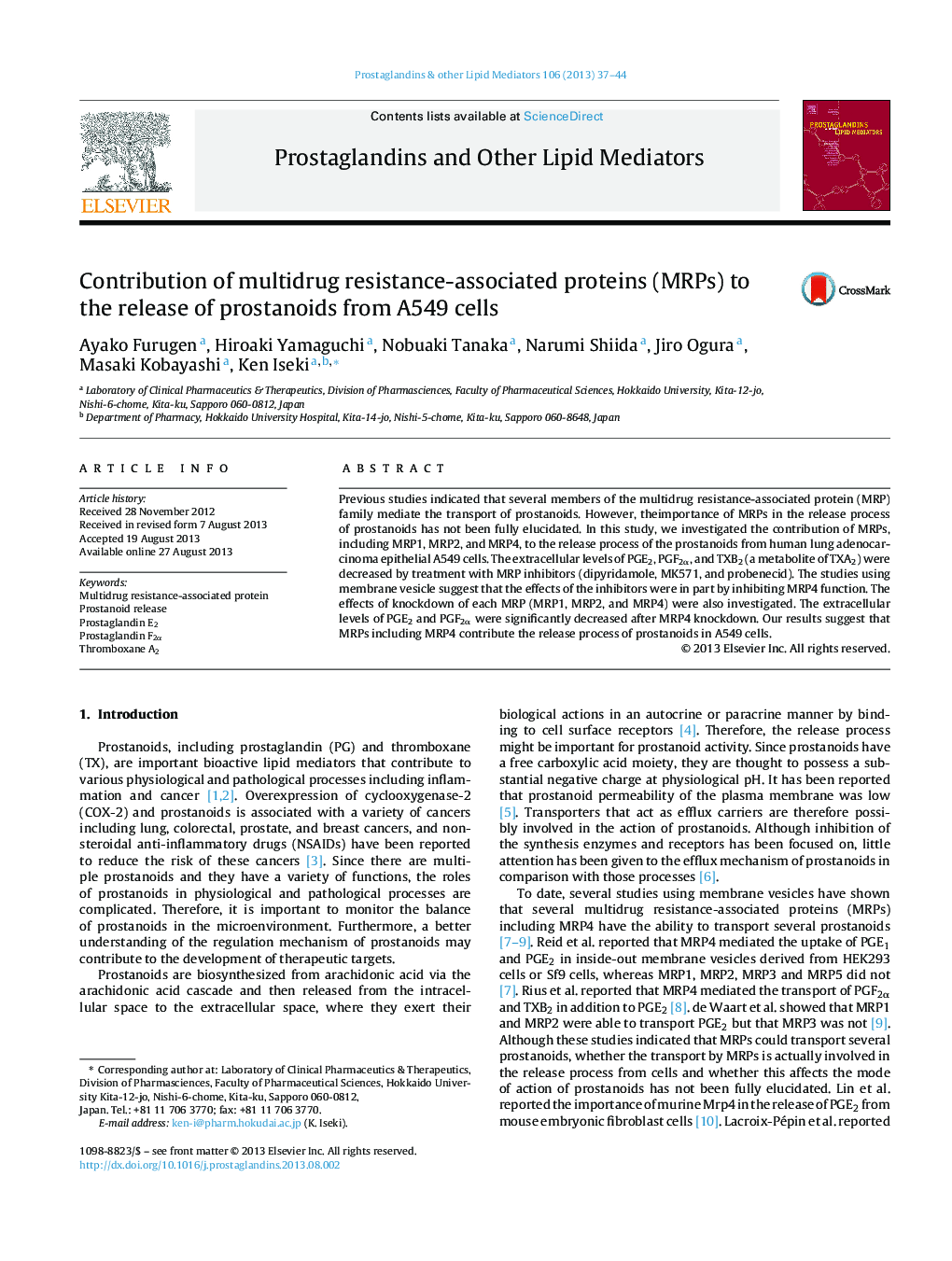| Article ID | Journal | Published Year | Pages | File Type |
|---|---|---|---|---|
| 2019522 | Prostaglandins & Other Lipid Mediators | 2013 | 8 Pages |
•MRP inhibitorsmodulate extracellular prostanoid levels, in part by inhibiting MRP4.•MRP4 knockdown reduced the extracellular levels of PGE2 and PGF2α.•MRP2 knockdown reduced the extracellular TXB2 level.
Previous studies indicated that several members of the multidrug resistance-associated protein (MRP) family mediate the transport of prostanoids. However, theimportance of MRPs in the release process of prostanoids has not been fully elucidated. In this study, we investigated the contribution of MRPs, including MRP1, MRP2, and MRP4, to the release process of the prostanoids from human lung adenocarcinoma epithelial A549 cells. The extracellular levels of PGE2, PGF2α, and TXB2 (a metabolite of TXA2) were decreased by treatment with MRP inhibitors (dipyridamole, MK571, and probenecid). The studies using membrane vesicle suggest that the effects of the inhibitors were in part by inhibiting MRP4 function. The effects of knockdown of each MRP (MRP1, MRP2, and MRP4) were also investigated. The extracellular levels of PGE2 and PGF2α were significantly decreased after MRP4 knockdown. Our results suggest that MRPs including MRP4 contribute the release process of prostanoids in A549 cells.
